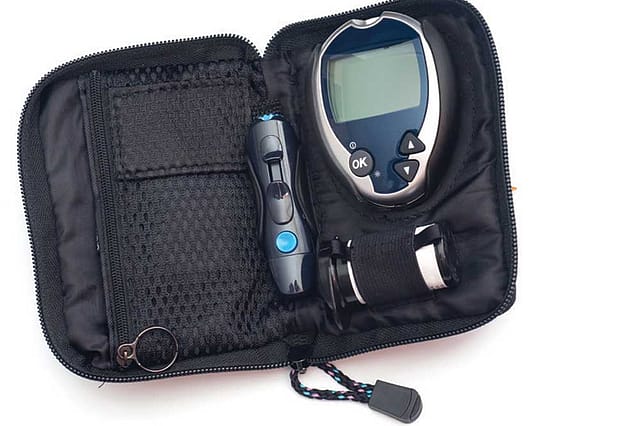Travel Tips for Diabetics

A CONSTANT REFRAIN from many people with diabetes is their concern about the tricky business of travel. For diabetics, especially those on insulin, the prospect of travelling appears to be all the more incommodious and bothersome. Many of my patients are frequent travellers. Some of them spend half their lives travelling: at airports; in transit; in the aircraft; in hotels. They traverse time zones and zig-zag continents constantly and spend long periods in environments which may not always be in their control—a scenario in which routine is the first casualty. Often, when I advise my patients that they would do best if they went on to insulin treatment, the pat response I get is: 'But doctor, I can't go on insulin. I travel incessantly: across India, to Europe, to the US. How will I possibly manage?' Come summertime, the mercury soars to 45°C plus, the Delhi sun threatens to burn everything and everyone in its path, and many who are not frequent travellers also head for the cooler climes of Europe and the US.
In either case, whether you are traveling for work or for leisure, advance planning can ensure sugar control and keep you safe. Preparation will depend upon the duration of your trip, whether you are travelling across time zones, type and timing of food that will be available, and whether any unusual physical activity is planned. Ambient temperatures and availability of refrigeration are also important factors to keep in mind. For example, if you are a vegetarian travelling to East Asia, you may end up surviving on a diet of bread and rice—simple carbs, which you avoid scrupulously while at home.
2026 New Year Issue
Essays by Shashi Tharoor, Sumana Roy, Ram Madhav, Swapan Dasgupta, Carlo Pizzati, Manjari Chaturvedi, TCA Raghavan, Vinita Dawra Nangia, Rami Niranjan Desai, Shylashri Shankar, Roderick Matthews, Suvir Saran
If you are going to be away for more than a week it is a good idea to visit your doctor in advance, if for nothing to get an updated prescription. In addition, it is useful to carry a letter from your doctor with a list of medicines and permission to carry them on the flight. This is important if you are carrying needles for finger-prick testing or insulin administration. You should also find out the access to health facilities in the country where you are travelling to—particularly if you are going for a trek or wildlife excursion.
Ideally, you should carry a diabetes card, with instructions on how to manage low blood-sugar (hypoglycaemia) reaction; Indians usually don't. Carry glucose tablets or sugar sachets to treat hypoglycaemia and handy snacks like almonds, roasted chana or crackers for when a meal is missed or delayed.
When flying, pre-book a diabetic or healthy meal if possible. While it is useful to opt for these meals, it isn't always necessary, as with a little bit of tweaking one can fit the regular airplane meals into their meal plan. Simply put, remember that a meal of whole grains, lean meat and vegetables is less likely to spike your sugar than a meal full of refined flour, juices and fat. Take your insulin shot only when the food service starts in your section. Insulin has to be transported with due precautions, in the right kind of packs. Typically, insulin in use does not need to be refrigerated (never frozen) but the stocks do. Don't keep your insulin in your check-in luggage as it could get affected with changes in temperature and cabin pressure. In general, insulin can be kept at 25°C for about a month without any loss of potency. I frequently get panic calls from my patients travelling overseas that they forgot or misplaced their insulin. It's a good idea to be aware of the corresponding brands of insulin available in the country you are visiting. Very often people stop testing their blood glucose when on vacation—in fact, travellers should check their blood glucose frequently
You should be aware of time-zone changes, and schedule your meals and medication accordingly. Remember, travelling West makes you gain time and travelling East makes you lose time. This could affect your meals and how much medication you need. For example, if you are flying West, the day will be longer. If you are on insulin, because of this you will need to take an extra dose of short-acting insulin. If flying West to East, you will probably need one less injection of short-acting insulin. You should continue to take your long-acting insulin at the usual time. The timing of oral drugs is not as crucial as that of insulin. If you are on twice-daily regimen of sulphonylurea (such as glimerperide and gliclazide), it might be better to skip a dose when travelling across time zones than to take two doses together and risking low sugar. Patients on drugs like metformin, SGLT2 inhibitors and DPP4 inhibitors can continue their usual routine.
Whether for work or pleasure, whether alone or with your loved ones travel can and should be fun, and diabetes should not be a limiting factor. With good planning, your trip can be safe, fun and hassle-free.
